20 Anime Movies Even Non-Anime Fans Will Love
None
If you think you don’t like anime, then here are some films that could change your mind. By Leah Holmes
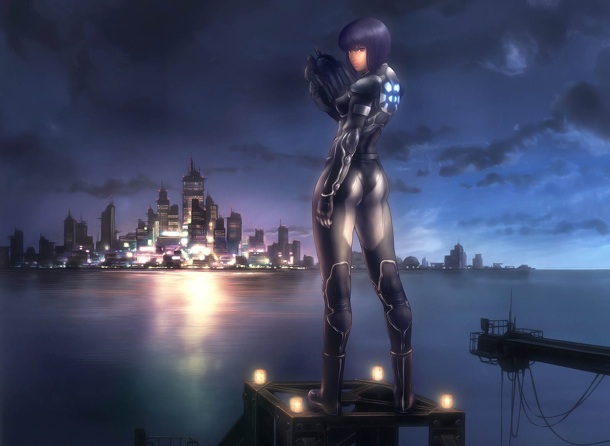
The first question anime fans tend to ask anime haters is, “Have you ever actually watched any?” It may be annoying to non-fans but there’s a good reason for it – outside of anime fandom, the medium often gets written off as being bizarre and inaccessible, and any anime fan can tell you that’s not entirely fair.
Anime is not a genre, it’s a medium, and there really are titles out there to suit pretty much any taste. Akira may be notorious for its mind-bending final act, but here are a few titles that only the most stubborn of non-fans could fail to enjoy…
20 MEMORIES: “MAGNETIC ROSE” (1995)
It’s not “anime”, it’s… Event Horizon , starring Maria Callas (“Magnetic Rose”)

There are three stories in this triptych (as there usually are), and while they’re all worth a watch, far and away the star of the piece is “Magnetic Rose”. It’s a sinister and atmospheric drama in which a team of deep space salvage operators respond to a strange distress signal coming from a dilapidated space station. Inside it they find an opulent concert hall and what seem to be the possessions of long-dead opera singer Eva Friedal, but as they explore, they find there is more to this place – and to Eva’s history – than meets the eye. Like Puccini’s opera Madama Butterfly – which features in the story – it’s dark, tragic… and strangely beautiful.
19 BLOOD: THE LAST VAMPIRE (2000)
It’s not “anime”, it’s… Blade , if Blade were a pigtailed highschooler
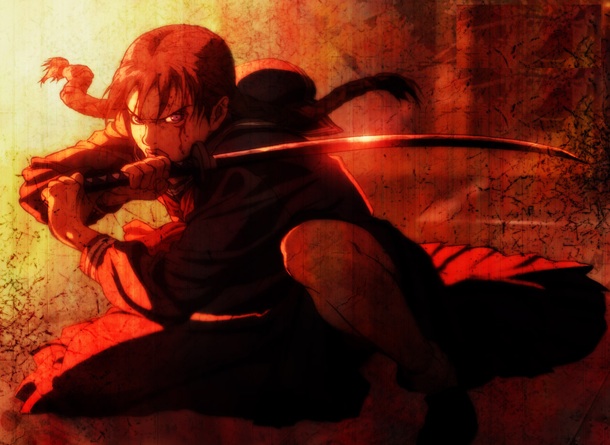
Disregard the horrendous live-action film of the same name – it really doesn’t live up to the original anime movie at all. Noteworthy for its international language production – it was designed to have a mostly English script, rather than having an English dub added later – it follows a schoolgirl named Saya, whose whole purpose in life is ridding the world of bat-like vampiric creatures called chiropterans. It’s a relatively short film at only 50 minutes long, but it’s hacky-slashy action with a side serving of angst… what’s not to love?
Get sneak previews, exclusive competitions and details of special events each month!
.
.
18 MACROSS PLUS (1995)
It’s not “anime”, it’s… a terrifying vision of the future of the music industry. Plus, dogfights
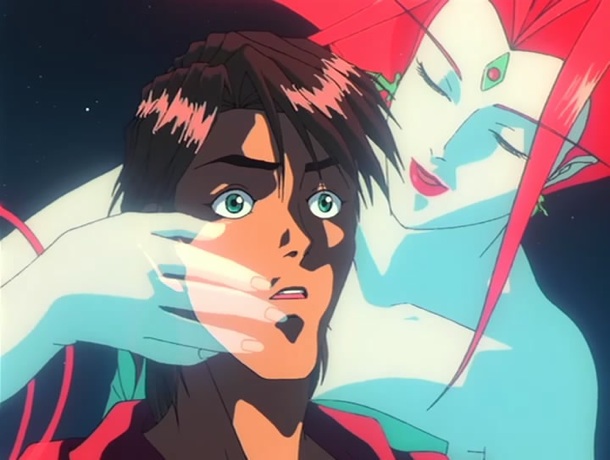
Macross is a well-established anime franchise, and throughout its history each series has had two elements in common: fantastic flight sequences and extensive soundtracks. Macross Plus is largely considered to lead the pack on both counts, seamlessly merging CGI and cel animation (before Ghost In The Shell did the same thing to great acclaim) and delivering a soundtrack by renowned composer Yoko Kanno (who also worked on Cowboy Bebop ) that moves from ambient song to technopop to smooth jazz. It’s also got the darkest plot of all the Macross series so far, featuring a new type of fighter plane controlled by brainwaves, a sinister pop idol who is also an entirely digital construct, and the fraught relationship between three old friends who share a terrible secret.
17 ROUJIN Z (1991)
It’s not “anime”, it’s… a heartwarming, Michel Gondry-esque comedy about an old man and his possessed bed
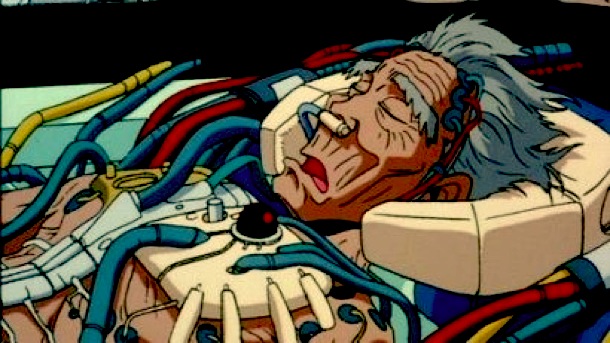
There are big names in the credits of this bonkers comedy – written by Katsuhiro Otomo, directed by Hiroyuki Kitakubo ( Blood: The Last Vampire) and featuring a first-time art director by the name of Satoshi Kon – but it’s weirdly not as well-known as it should be. In an effort to deal with a growing elderly and infirm population, hospital administrators develop a new type of automated bed designed to attend to all its patient’s needs. Their test goes a bit wrong when the bed, hooked up to a dying widower, seemingly becomes possessed by his late wife and decides they’re going to have a lovely day out at the beach, rampaging across the city as it goes. It sounds insane – and we can’t really disagree – but it’s a sweet story really, funny and beautifully told.
.
.
16 SUMMER WARS (2009)
It’s not “anime”, it’s… Tron , directed by John Hughes
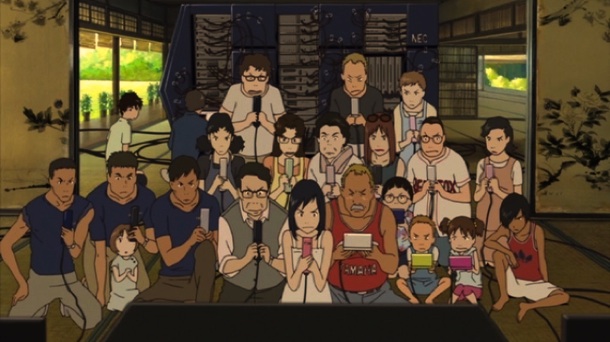
The Girl Who Leapt Through Time director Mamoru Hosoda returns to show that he can tell a huge-scale story while still maintaining his lightness of touch that made his previous film so endearing. Summer Wars stitches together two distinct stories: that of a teenage boy being enlisted by a female friend to pretend to be her boyfriend in front of her extended family, and a world-threatening act of cyberterrorism. While the worlds couldn’t be more different – the family life is all very simple and traditional, while the internet world is bold, colourful and cartoonish – they fit together beautifully to deliver what is – weirdly enough – a heartwarming tale about family (and communities, offline and on) banding together to stand up against would-be aggressors, funny and sad in equal measure.
15 JIN ROH (1999)
It’s not “anime”, it’s… a bleak, hard-hitting alternate reality drama which Frank Miller fans will love

Perhaps the most affecting thing about Jin Roh is that it’s clear from the outset that, one way or another, it can’t end well. Set in an alternate version of the 1950s where Germany has conquered and occupied Japan, it centres on the relationship between a reluctant soldier and a young woman with apparent links to the resistance forces. Written by Mamoru Oshii but lacking his fondness for obscurity, it’s dark as hell and exceptionally powerful. Its third act, which harks back to the Little Red Riding Hood fairytale, is surely one of the bleakest pieces of drama anime has ever served up.
.
.
14 PAPRIKA (2006)
It’s not “anime”, it’s… Inception , without all the ambiguity and fan wank

The last feature film of master director Satoshi Kon finished prior to his death last year (his final project, Dreaming Machine , is being completed posthumously), and arguably his finest. Like all of Kon’s work, this tale of dream exploration and manipulation (presided over by our coquettish heroine Paprika) effortlessly blurs the lines between fantasy and reality, throwing up spectacular dreamscapes supported by an energetic and evocative score. It does become increasingly surreal as the film goes on, with parades of kitchen appliances and terrifying talking dolls, but it’s impossible not to be absorbed by the world Kon creates.
13 CASTLE OF CAGLIOSTRO (1979)
It’s not “anime”, it’s… a family-friendly fantasy adventure with French roots
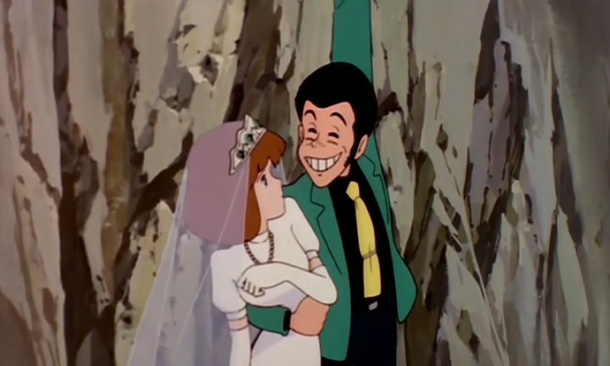
Castle Of Cagliostro is possibly the best-known of the Lupin III films, undoubtedly in no small part due to it being Hayao Miyazaki’s first feature-length production (before the formation of Studio Ghibli). Lupin III himself is the grandson of the French literary character Arsene Lupin, and he upholds his grandfather’s “gentleman thief” image – Cagliostro sees him trying to hunt down the source of some counterfeit banknotes and rescuing a damsel in distress from a sinister plot while he’s at it. The story borrows heavily from the original Arsene Lupin stories, but Miyazaki’s artistry is also clear to see, particularly in its dynamic chase scenes and flight sequences. It may be a little dated, but it’s a fun family romp nonetheless.
.
.
12 METROPOLIS (2001)
It’s not “anime”, it’s… Fritz Lang’s Metropolis fused with Blade Runner

The great Osamu Tezuka (creator of Astroboy ) produced a manga in 1949 bearing the name Metropolis . Although inspired by the concepts of Fritz Lang’s movie of the same name, the two bear little resemblance to each other. Katsuhiro ( Akira , Steamboy ) Otomo’s film acts as a bridge to connect the two – it’s primarily an adaptation of the manga, but it also incorporates Lang’s themes of a robotic underclass and social activism. Its retro aesthetic and tone are beautifully constructed, capturing a 1940s atmosphere perfectly. The big set piece in the final act is of particular note for its brilliant choice of soundtrack and lavish direction.
11 THE GIRL WHO LEAPT THROUGH TIME (2006)
It’s not “anime”, it’s… a Steven Moffat timey-whimey tale with a hint of Misfits

Heroes ’ Hiro Nakamura, upon discovering he had powers of time travel, decided to use them for the greater good. Makoto Konno, the heroine of this frothy sci-fi romance, has no such lofty aspirations – she just wants to avoid being late for class, get better marks on her tests, and enjoy her karaoke sessions for longer. It’s this innocent quality that lends so much charm to the film and keeps it from becoming overly earnest, even in the later parts of the story. Director Mamoru Hosoda handles it with a deft lightness of touch that results in an emotionally-charged ending. It’s a simple film, but very, very effective, with a twist that you really don’t see coming.
.
.
10 GHOST IN THE SHELL STAND ALONE COMPLEX: SOLID STATE SOCIETY (2006)
It’s not “anime”, it’s… an intelligent summer sci-fi blockbuster, in tone like Minority Report if not in themes
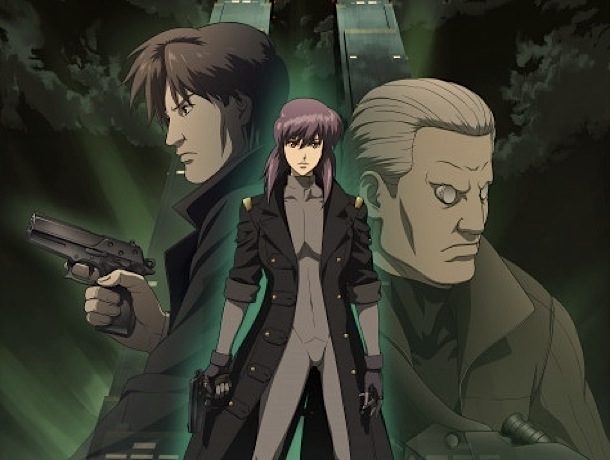
Avoid the other Ghost In The Shell sequel movie, Innocence , as it’s a mess of obscure philosophy and silly quote battles. The Stand Alone Complex movie on the other hand, just like the TV series, is exciting and accessible. There are a couple of elements that don’t flow with the end of the original movie, like Kusanagi’s cyborg body and her departure from Section 9, but they don’t negatively impact your ability to follow the story, which despite Oshii’s absence is still well-planned and well-executed.
9 GHOST IN THE SHELL (1995)
It’s not “anime”, it’s… Blade Runner – hard sci-fi, complete with questions about the nature of identity in an increasingly networked world
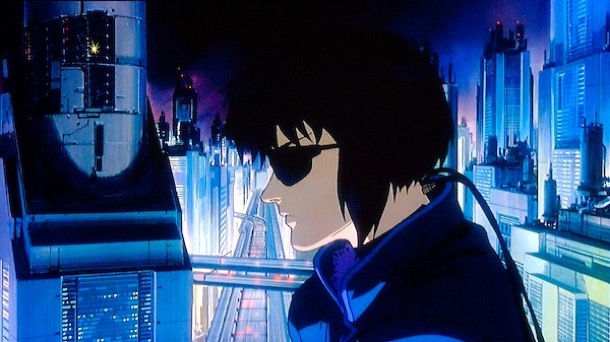
We’re not going to pretend that Ghost In The Shell can be fully appreciated on a single viewing – in true Mamoru Oshii style, it’s heavy on philosophy. But it can’t have been that much of a mind-bender, since it was one of the first anime movies (and possibly the first hard sci-fi anime movie) to find an appreciative audience among both anime fans and more general sci-fi aficionados. Set in a distant, cyberpunk future where cyborg bodies occupied by human consciousnesses (the titular ghosts in the shell) are commonplace and the ease of network access enables human beings themselves to be hacked into, it’s an intelligent SF thriller with themes that still resonate today.
.
.
8 PROFESSOR LAYTON AND THE ETERNAL DIVA (2009)
It’s not “anime”, it’s… Sherlock Holmes, with input from Russell T Davies

Yep, this is a movie based on the series of puzzle-solving games on Nintendo DS, and weirdly enough, it manages to incorporate the puzzle-solving elements of the formula (albeit without expecting the viewer to solve them) without feeling forced (or weird for those who haven’t played the games). Make no mistake, it’s a family film through and through, so its mystery, while interesting, isn’t overly complicated and it does have some very silly elements, particularly in the third act… but then you could say the same thing about Doctor Who ’s Christmas specials, and that hasn’t diminished their widespread appeal one bit.
7 STEAMBOY (2004)
It’s not “anime”, it’s… a fun steampunk romp in a British setting (and about a zillion time better than The League Of Extraordinary Gentlemen )

You may be experiencing an understandable sense of trepidation about a film that proudly displays its “from the director of Akira ” credit, but fortunately that trepidation is completely misplaced. While Akira came about as a result of trying to fit an eight-volume, hard sci-fi epic into a 125-minute film, Steamboy stands on its own as a slightly silly but nonetheless massively entertaining steampunk romp. Sure, it’s got some strange ideas about British geography, but it’s lovingly crafted and so charming in its execution that it’s hard to criticise it for that (besides, it features a cameo from the Rovers Return in an early scene – bet you weren’t expecting that).
.
.
6 COWBOY BEBOP: KNOCKIN’ ON HEAVEN’S DOOR (2001)
It’s not “anime”, it’s… Firefly , but in a sci-fi rather than a steampunky western setting and with a funky jazz soundtrack
It’s unclear whether Joss Whedon was indeed influenced by the original Cowboy Bebop series, but fans of the sometimes comic, sometimes tragic anime about a ragtag team of bounty hunters have frequently noted its various (albeit subtle) similarities to Firefly . Like Beautiful Dreamer (see number 5), the Cowboy Bebop movie is a standalone piece that requires no prior knowledge of the original series, although this time it’s because the main characters are concisely but stylishly introduced so that fans of the original don’t get bored, but new viewers don’t feel lost. The movie’s bioterrorism plot is intriguing without being overwhelming, and the energetic jazz score ties it all together beautifully.
5 URUSEI YATSURA: BEAUTIFUL DREAMER (1984)
It’s not “anime”, it’s… Inception meets Groundhog Day
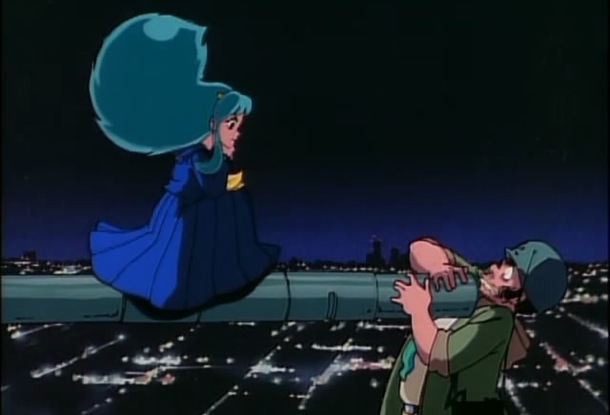
Urusei Yatsura was a long-running slapstick manga series about a womanising schoolboy, his alien girlfriend and their insane classmates, that was also made into a long-running slapstick anime series featuring said womanising schoolboy, alien girlfriend and insane classmates. It also spawned several movies, and Beautiful Dreamer divided the fans. It was the second Urusei Yatsura movie for director Mamoru Oshii (who later gave us Ghost In The Shell ), and having stuck closely to the source for the first movie, this time he said he would make his film in whatever way he liked (an ethos which he has stuck to in film-making ever since). Japanese fans felt that the end result, which saw the entire student body mysteriously reliving the same day over and over, was too much of a departure from the beloved original. Western fans, however, embraced it – since it’s a standalone piece and much of the characterisation has changed, it requires no prior knowledge of the manga or TV series. Its references to Japanese folk culture are well-handled enough to not be too distracting for non-Japanese viewers, and since its main sources of humour – slapstick and innuendo – are pretty universal, it proves to be good fun regardless of where you’re from.
.
.
4 EVANGELION 1.0: YOU ARE (NOT) ALONE (2007)
It’s not “anime”, it’s… Godzilla , but with jawdropping special effects and giant cyborgs instead of the giant lizard

The original series of Neon Genesis Evangelion is considered to be both one of the finest examples of the mecha genre, and one of the most confusing (and/or pretentious, depending on your viewpoint) anime series ever. There are various stories about what led to the series ending the way it did, but none of them matter in the face of the four-part movie series. Writer and director Hideaki Anno returned to the project, but this time he had a bigger budget and better special effects available to let him tell his story about the monstrous invading “Angels” and the teenagers charged with destroying them. The end result is a thing of beauty: it trims all the fat from the original series for a punchy, to-the-point retelling, and not only is it exciting and accessible, it looks better than any anime movie we’ve seen so far.
3 HIGHLANDER: THE SEARCH FOR VENGEANCE (2007)
It’s not “anime”, it’s… a Highlander sequel that quietly and sensibly ignores all the crap bits of the franchise

An example of the Japanese doing rather well with a Western property, The Search For Vengeance was produced by the acclaimed Madhouse Studio (who’ve had their hands in just under half the films on this list) and directed by Yoshiaki Kawajiri, who also delivered the Animatrix short “Program”. Set far in the future, it pretends all that stuff about aliens never happened and instead concentrates on its own Immortal, Colin MacLeod, and his 2,000-year struggle against the villainous Immortal Marcus Octavius. Kawajiri’s distinctive aesthetic means that it’s a stylish movie, making effective use of flashbacks to flesh out its characters and tell a story that is true to the spirit of its source material. It also has a very clever conceit for the flashback sequences, reverting to an old-fashioned style of anime animation.
.
.
2 THE ANIMATRIX (2003)
It’s not “anime”, it’s… the Expanded Universe of The Matrix

The Matrix broke all kinds of new ground for sci-fi. The sequels… exist. And then there’s this anthology of short animated films that expand upon the themes, world and mythology of the series. Yeah, some of the films aren’t anime in the truest sense due to having American production teams, and half of them are designed to slot in with the main series, but it nonetheless boasts pieces that succeed in utilising the aesthetics and storytelling techniques most typically associated with anime while still, as a whole, providing a fitting and satisfying extra helping of the Matrix universe for fans, whether they’re bigger, directly-related films (such as two-parter “The Second Renaissance”) or small, standalone stories (notably “World Record” and “Beyond”).
1 ALMOST ANY STUDIO GHIBLI FILM (1984 – Present)
It’s not “anime”, it’s… Walt Disney’s finest, with a Japanese flavour and fewer cheesy songs
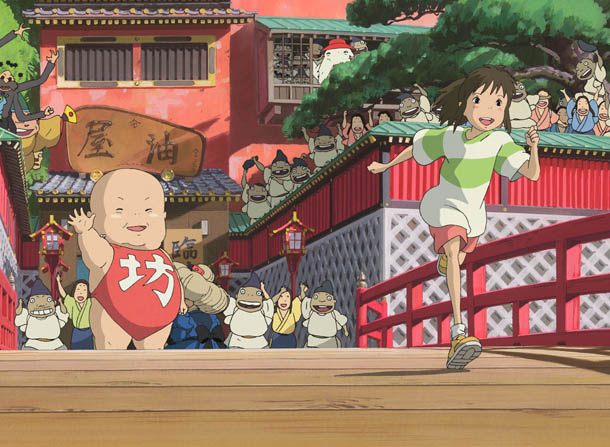
Okay, they’ve had a couple of dodgy titles ( Tales From Earthsea , for example), but Studio Ghibli is world-renowned for good reason. Hayao Miyazaki steals the limelight really, since all his films with the studio (including Nausicaa, which was made before the studio’s formation and is considered an honorary Ghibli film) have offered captivating stories and characters that appeal to all ages, but all of the studio’s films have shown a great deal of both film-making and storytelling artistry, from the silly fantasy of The Cat Returns to the heart-breaking drama Grave Of The Fireflies . And don’t forget, Spirited Away won an Oscar – you can’t get much better Western acceptance than that.
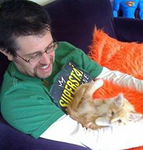
Dave is a TV and film journalist who specializes in the science fiction and fantasy genres. He's written books about film posters and post-apocalypses, alongside writing for SFX Magazine for many years.


